When you sell through multiple sales channels – marketplaces and webstores – business gets complicated very quickly.
The solution is a multichannel inventory management system. This sits at the center of your business, maintaining accurate data on all of your stock, customers and orders. It also connects out to your sales channels to keep your data synchronized at all times.
Multichannel management software can be very expensive. Some companies take a percentage of every sale you make. Others have fixed prices of thousands of dollars per month. Those tools might be great for big companies, but for many online sellers the cost is too much to stomach.
So, in this article we have rounded up five very capable multichannel inventory management systems that don’t cost the earth.
Best value multichannel inventory management tools
At a glance
|
|
|||||
| Lowest price for 500 orders/month | $149/mo | $90/mo | $120/mo | $195/mo | $245/mo |
| Trial length | 14 days | 15 days | n/a | 30 days | 14 days |
| Marketplace integrations | 9 | 12 | 3 | 4 | 4 |
| Webstores integrations | 3 | 10 | 11 | 10 | 11 |
| Shipping integrations | 7 | 12 | 17 | 1 | 10 |
| Create and sync listings | ✓ | ✓ | ✓ | ✓ | ✓ |
| Kits and bundles | – | ✓ | ✓ | Via Netsuite | ✓ |
| Warehouse management | ✓ | ✓ | ✓ | Via Netsuite or SkuVault | – |
| Dropship automation | Via Inventory Source | ✓ | – | – | – |
| Purchase orders | – | ✓ | ✓ | Via Netsuite | ✓ |
| API | ✓ | ✓ | ✓ | ✓ | – |
| Reviews | Sellbrite reviews | Ecomdash reviews | ChannelGrabber reviews | Sellware reviews | Expandly reviews |
Integration counts exclude multiple products from the same company e.g. Magento and Magento 2 count as one integration.
Sellbrite

Pros: Sellbrite starts at only $49 per month for up to 100 orders, and Amazon FBA orders are not counted towards the order total. Great user feedback on features and support.
Cons: Fewer shopping cart integrations than other providers. Lacks support for kits and bundles, and does not generate purchase orders automatically.
Summary: A great value tool with excellent features overall. Excellent integrations with online marketplaces including Amazon, eBay, Etsy, Walmart, Sears, Newegg, Rakuten and more.
Read Sellbrite reviews
Ecomdash

Pros: Ecomdash is extremely rich in features, and everything is included at all price levels, because the price is based only on the number of orders your process per month.
Cons: Some users report that Ecomdash takes a while to set up and that the instructions could be better.
Summary: Great value and functionality, with solid inventory control alongside support for kits and bundling and dropship automation. Fast support is provided by email or phone.
ChannelGrabber

Pros: A modular approach to pricing means that ChannelGrabber’s cheapest plan at $120 per month provides unlimited SKUs, channels, carriers, users and support.
Cons: The mid-range plan is a big step up to $600 per month, and some features are only available on the Enterprise plan with negotiated pricing. No free trial.
Summary: ChannelGrabber has excellent user reviews and, as a British company, great support for UK parcel carriers like Royal Mail and Parcelforce.
Sellware
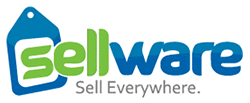
Pros: Sellware’s 30-day trial is twice the length of most other providers. A Netsuite integration makes this a low-cost way to extend Netsuite’s ERP features with access to online marketplaces.
Cons: Sellware relies on other systems for some inventory management features such as kits, warehouse management and purchase orders. One of the pricier solutions listed here.
Summary: A great choice for existing Netsuite or Brightpearl users who want a fully integrated system for selling through online marketplaces.
Expandly

Pros: Expandly is a good value inventory management system, with up to 15,000 SKUs, five sales channels and 7,500 orders per month on its Standard plan, priced at £2,100 (around $3,000) for 12 months. A dedicated contact is provided with the Premium plan.
Cons: On the Standard plan, you have to pay more for some features such as scheduled CSV imports and vehicle compatibility. API access is only available with the Enterprise plan.
Summary: An impressive feature set from another British software company. Excellent range of shipping integrations with parcel carriers around the world.
Buying advice
Pricing models
The way companies charge for multichannel management software varies a lot. Different pricing models include:
- A percentage of sales or a fee per order. Typical percentages are in the 1% to 2% range.
- Tiered subscription levels with an increasing number of orders included as the price goes up.
- A modular approach where you can pick and choose the number of supported marketplaces and other features from a list of options.
- Per-user pricing with a fixed monthly cost for every user of the system.
- Various combinations of the models above.
There’s no universal answer as to which pricing model is better or cheaper. It depends on your business. While a percentage of sales has the fairness of scaling up only when your business is growing, some sellers hate the idea of a software provider taking a cut of every sale.
Tiered pricing models, however, allow for some growth without additional fees, but there can be large jumps between the levels and additional fees for going over the limits. The total cost sometimes works out to be very similar under both tiered and percentage models.
Modular pricing makes sense for some sellers, because you don’t have to pay for features you don’t use. The downside is that if you later decide you do need an additional module, then the price will increase. That might hold you back from making changes that could grow your business.
What integrations do you need?
An “integration” means that your inventory management tool can exchange information with another system automatically. You don’t need to get any custom programming done or export CSV files if there is a ready-made integration.
Integrations are crucially important, because a multichannel inventory management system sits at the center of your business. It need to connect to a variety of other systems including:
- Marketplaces like Amazon and eBay,
- Webstores like Shopify and Magento,
- Parcel carriers and shipping tools like UPS and ShipStation,
- Accounting systems like Xero and QuickBooks…
…and many more.
Make a list of integrations that you can’t live without – your must-haves – and those you would prefer to have but can work around if necessary – your nice-to-haves. That way you know what to look for in a potential multichannel management system.
Bear in mind that some integrations may be provided through another tool. For example some inventory management systems don’t have many connections to parcel carriers, but instead support shipping tools like ShipWorks or EasyShip. Those have very extensive shipping integrations available, but there will usually be an additional cost involved.
Another possibility is that you can get your own connection built if the systems you need to connect both provide an API. Most of the inventory management software covered here does. But be careful – just because a system has an API doesn’t mean it will be easy to connect. That will be a software development project in its own right, and it might be hard to find a developer who can do the work at a reasonable price.
Feature requirements
Inventory management systems often come with so many features that it can be overwhelming to try and understand what they do, and what you actually need. Most systems are stronger in some areas than others, so you will probably have to decide where to make trade-offs.
The major modules to look for are:
- Inventory. Does the system make it easy to add new stock, and make edits in bulk?
- Listing. Does the system create listings on marketplaces, or just connect to existing listings?
- Orders, shipping and fulfillment. Does the system download orders, and manage the pick, pack and ship process?
- Reporting. What kind of charts and statistics are available to help you analyze how your business is doing, and where to make changes?
- Purchasing. Does the system alert you when stock is low, and generate purchase orders to send to your suppliers?
There are many additional features within the main areas above. For example, the ability to handle inventory kits and bundles is critically important for some sellers. Others might need a system that can track inventory across multiple warehouses (such as their own facility and Amazon FBA).
Some systems provide dropship automation, so when an order comes in that needs to be fulfilled directly by the supplier, the order data is automatically sent across to them. If you sell car parts online then having a fitment database built-in might be a must-have.
Feature requirements are highly individual, so as with the integrations take the time to figure out which features are your must-haves and nice-to-haves.
Usability, quality and support
These are some of the most important factors of all, but very difficult to assess without actually using the software.
Your productivity will be much higher with a system that is quick and intuitive to use, than with a more powerful system that has a very difficult learning curve. Having said that, the concepts are the same for all inventory management systems, so once you are familiar with one system it should be much easier to get to grips with other systems in the future.
Likewise, bugs can be very frustrating, and a real drain on your time and energy. All software has bugs, but some tools have big showstoppers that can bring your business to a standstill. The ability of software providers to fix bugs varies widely as well.
Your software provider’s support system is critically important too. Due to the complexity of multichannel ecommerce, and the importance of the software to your business, you should expect to need support from time to time.
How can you contact the support team? Is it just by email or can you phone them too? Do the support staff know the system inside out, or do they have to keep escalating your tickets to the developers?
The best way to assess these “soft” factors are:
- Talking to other users
- Reading reviews
- Watching an online demo
- Taking a trial
Because multichannel inventory management systems are so complex it’s difficult to get a full picture from a short trial, particularly if you aren’t working with real data. Find out as much as you can before jumping in. Trials are usually free, but they still take a lot of time and effort.
This article was first published in July 2019 and last updated in March 2020.
Comments
Thanks for mentioning Expandly :)
Nice article. I do find a lot of these very pricey though. It seems silly that the prices go up so much for more SKUs since the amount of work involved is the same whether it is 1 SKU to synch or 5000. I guess there is some slight additional cost for the data storage and electricty but all the cost is in building the product
please give me more information
thanks
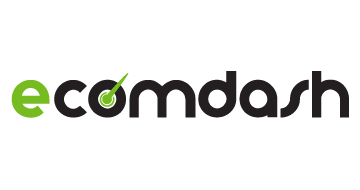
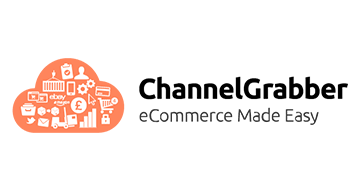
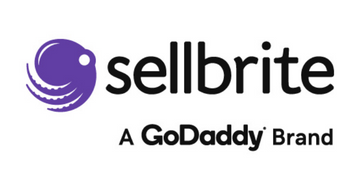
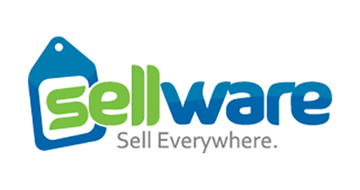
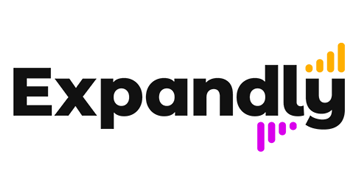
A very useful article. Absolutely adore it! But it's a pity that Sellbery is not mentioned. I use this listing tool and it's a perfect fit for my business, with necessary integrations and affordable prices.